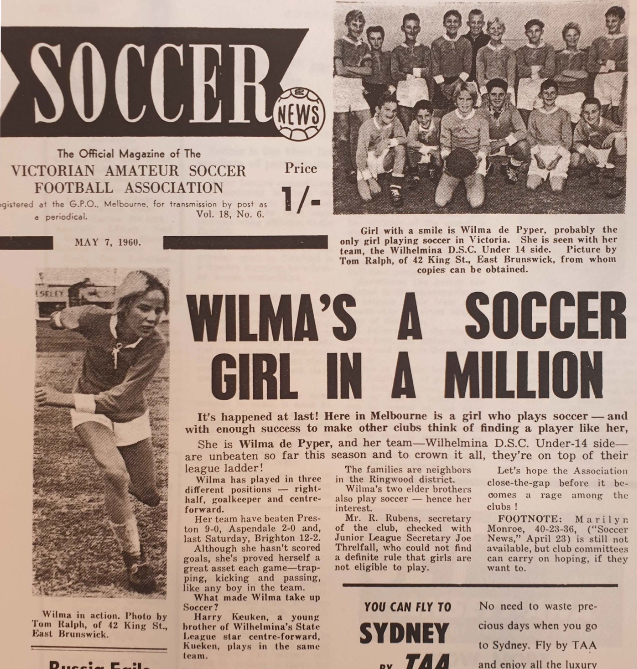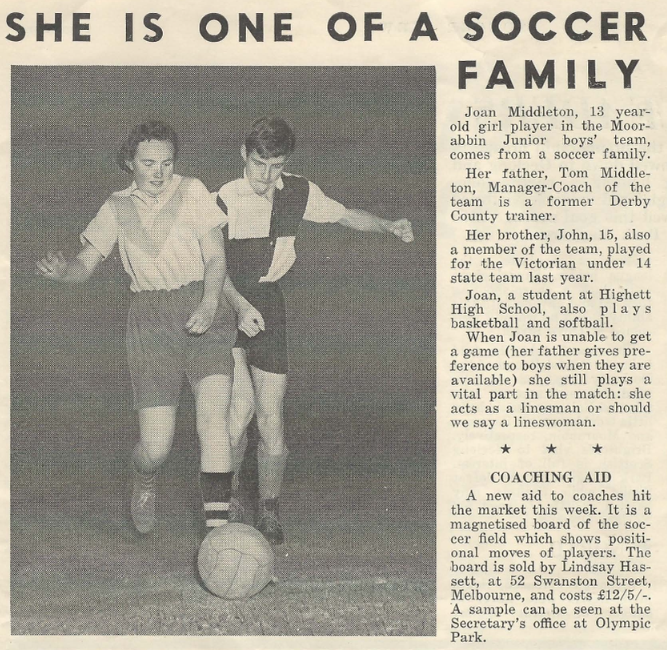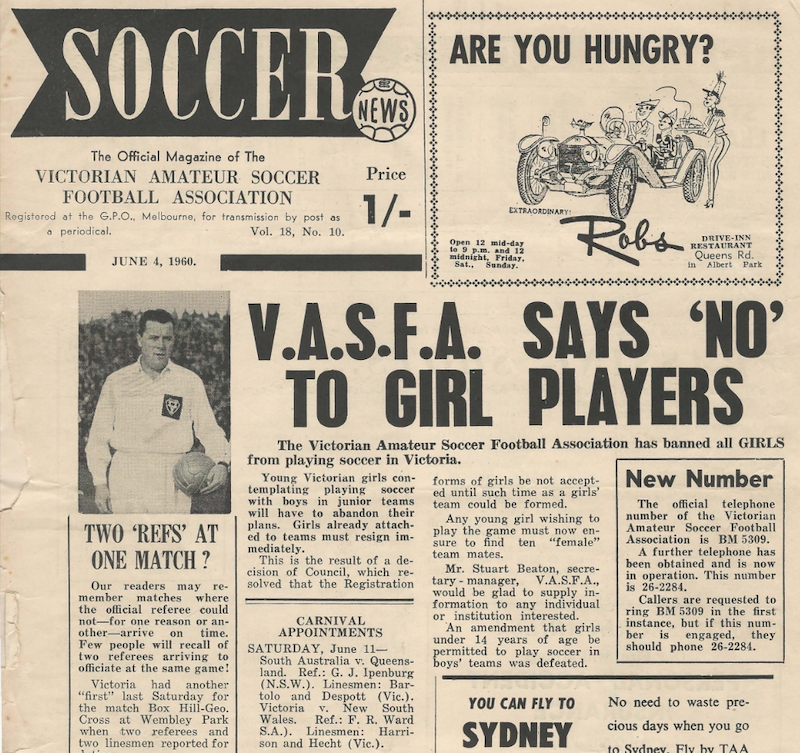This Female Football Week, Football Victoria looks back at a pivotal moment in the evolution of the game, as resident historian Tony Persoglia delves deep into the archives to explore what happened this month sixty-five years ago - a month which would stop the growth of Women’s football in its tracks.
Green shoots which led to the formation of the Victorian Women’s Soccer Association (VWSA) in 1973 are dotted throughout the preceding twenty years. Teams appeared as far wide as Cobram and Geelong in the 1950s, with little known of where and whom they played before they disbanded without a trace. While seemingly more organised and exhibiting stronger connections with their male counterparts, George Cross and Slavia suffered similar fates in the 1960s.
However, the challenges of girls playing soccer in 1960 were laid out to bare by the Victorian Amateur Soccer Football Association (VASFA). The game was enjoying one of its most significant periods of growth since World War II. Victoria’s pre-eminent competition had been rebranded the Victorian State League and comprised of new clubs hoping to emulate the dynasty of Juventus in the 1950s, themselves barely a dozen years into their existence. With Wilhelmina, Polonia, JUST, Hakoah, Melbourne (Hungaria) and Slavia all firmly established in the top-flight, an era of change wasn’t just upon the game, it had firmly taken hold.

This was no more evident than the story of Wilma de Pyper, who was featured as the lead story in the VASFA’s official weekly magazine ‘Soccer News’ on May 7, 1960. Wilma was the only girl in Wilhelmina’s Under 14 Boys side, unbeaten in their opening three matches of the season. The publication pronounced that Wilma was probably the only girl playing soccer in Victoria where she had played in three different positions – right half, goalkeeper and centre forward and proved herself a great asset each game. This was high praise from a publication whose editors were still struggling to come to terms with the changing face of the game, and consigned women to the social pages to its largely male readership.
The final two paragraphs speak to a looming opposition to Wilma’s participation. When Wilhelmina’s secretary was asked on whether a girl could play in a boy’s team, he checked with Junior League Secretary Joe Threlfall, who could not find a definite rule that girls are not eligible to play. Soccer News concluded with this call to the game’s administration: Let's hope the Association close-the-gap before it becomes a rage among the clubs!
Just what the rage entailed is anyone’s guess, but it was quickly evident that Wilma wasn’t the only girl playing soccer with the boys.

Three weeks later, the same publication featured a story on Joan Middleton, who at 13, was playing with the Moorabbin Under 16 Boys. With her father Tom originally from Derby Country in England and her brother John a member of the Victorian Under 14 Boys state team the previous year, Joan was indeed one of a soccer family.
If one girl playing boys soccer proved a curiosity, the existence of two clearly raised alarm bells at VASFA headquarters. By the following week, not even halfway through the junior season, the governing body issued an edict which would break the hearts of at least two players but put paid to the hopes of any others keen on playing the game.
The Victorian Amateur Soccer Football Association has banned all GIRLS from playing soccer in Victoria
Stuart Beaton, one of Victoria’s long-serving administrators of the time and the Secretary-Manager stepped in to clarify any ruling from the Junior League, suggesting that any girl already attached to teams must resign immediately.
Given the dearth of girls involved in the game, Beaton’s parting gesture speaks to an administration with little or no interest in opening its doors to females: Any young girl wishing to play the game must now ensure to find ten "female team mates”.

Records of the VASFA council meetings from that era are lost without a trace, so it is difficult to ascertain how the matter of girls involvement in soccer was raised and motioned to the point where it became a matter of concern for the body as a whole and not just the Junior League. Perhaps the strong performances of Wilhelmina’s team were a slap in the face to the Boys in opposition, though it’s more likely the governing body simply didn’t enjoy the perception of girls playing soccer adding to a growing narrative of derision from the Victorian Football League community threatened by the burgeoning crowds appearing at Olympic Park every other weekend.
Whatever the reasoning, the decision is a clear line-in-the-sand moment for Women’s football, and it would be almost a dozen years before those female team mates were found, and in growing numbers. The pioneers and trailblazers may have been set back by the decision, but were aided by another wave of migration, this time from the United Kingdom, where Women’s soccer had already begun to reemerge after suffering a similar fate over a quarter of a century earlier.
Another twenty-five years would pass before the VASFA’s descendant administrative body, the Victorian Soccer Federation - now Football Victoria - would amalgamate with Women’s Soccer Victoria to finally take the lead in the growth of Women’s football. The growth of the game in that time speaks to the lost opportunity and a genuine what-if moment had the VASFA entertained a vision quite unlike the one it ultimately employed.
